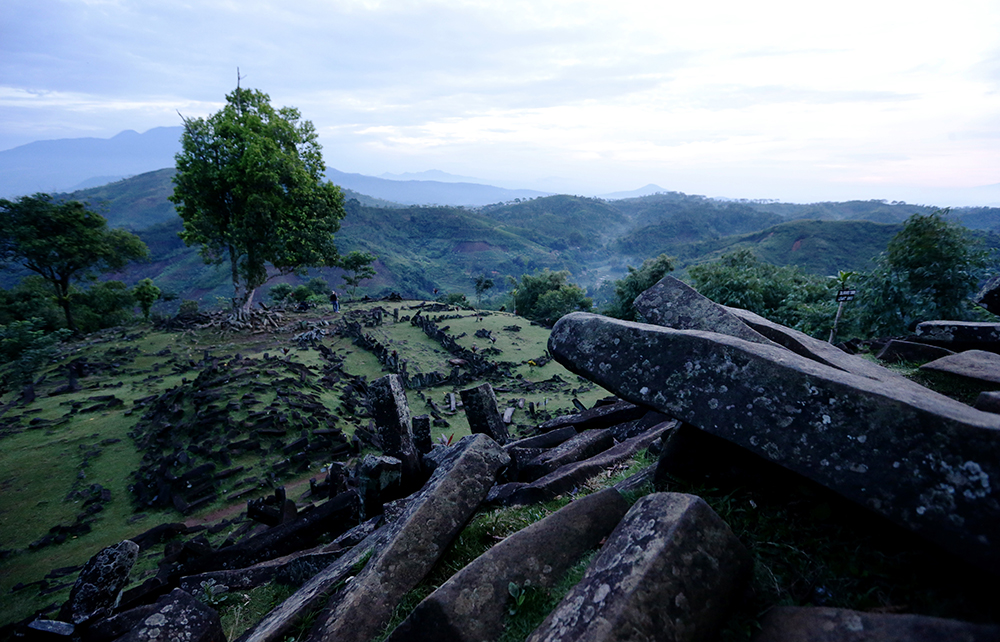Graham Hancock’s Ancient Apocalypse has been described by the Guardian as ‘the most dangerous show on Netflix’. What? More dangerous than the undigested, neo-Malthusian eco-propaganda that it serves up in its collaborations with Sir David Attenborough? More dangerous than its notorious movie Cuties, whose portrayal of hypersexualised children prompted a worldwide ‘Cancel Netflix’ campaign?
The Guardian’s main beef is that by flirting with speculations outside mainstream archaeology – Atlantis, giants, the survivors of the great flood and so on – the show ‘whispers to the conspiracy theorist in all of us’. But oddly enough, I found the opposite to be true. In fact, there were times when I felt as if, at every turn, Hancock’s fascinating ideas were being undermined by a series producer determined to make him look a bit slippery and unreliable.
I say this as a huge fan of Hancock. I’ve listened to his lectures, read some of his writing, and find his theories on ancient civilisations fascinating, seductive, plausible and well researched. Hancock (who is careful to describe himself as a journalist, not an archaeologist) has been to pretty much every ancient site across the world and has concluded that pre-ancient history as it’s currently understood doesn’t add up. Guided by old myths – which have many strands in common, across widespread, disparate cultures – he hypothesises that the technologies of our earliest known civilisations in ancient Egypt, Mesopotamia and Mesoamerica, were in fact passed on, Prometheus-like, from an even older, Ice Age-era culture that existed before the Great Flood.
It’s like Smiley’s People only with lots more booze, farting, squalor and, best of all, jokes
But instead of letting Hancock just tell his story from a series of attractive and intriguing locations around the world – Gunung Padang in Indonesia, Cholula in Mexico, Gobekli Tepe in Turkey, etc. – Netflix feels compelled relentlessly to remind us that a) this is all terribly controversial and b) honestly, it’s much more exciting than piles of old stones scattered on a hillside have any right to be.
When Hancock does his pieces to camera he is shot, not face-on, but from sundry exotic angles. Same with all the ruins: the film work is so busy it’s like having a bad acid trip. And at intervals, Hancock keeps having to reassure us that pretty much everything he is saying is rejected by most archaeologists. Even podcast host – and Marmite figure – Joe Rogan is wheeled in to vouch for his credibility.
If you’re sympathetic to Hancock’s thesis, you can ignore all these sledgehammer nudges. But if, like the Fawn who sat next to me tutting irritably, you’re being introduced to this stuff for the first time your BS antennae twitch and you reject the entire thesis. And, to be fair, the presentation invites such scepticism by continually reminding you that this is niche, crazy stuff that respectable ‘experts’ shun. Shame.
Still, at least Slow Horses is back for a second series. It’s like Smiley’s People only with lots more booze, farting, squalor and, best of all, jokes. Nothing is ever taken too seriously, even when lives are at stake, missions could be jeopardised and the safety of the nation threatened. Perhaps this is because, not unlike John le Carré, the novel series’s author Mick Herron understands that the world of intelligence is ugly, treacherous, sordid and the polar opposite of the faux-patriotic nonsense that another ex-spook tricked us into believing when he created James Bond.
Like all those classic BBC Le Carré adaptations, it’s a superb piece of ensemble acting. Gary Oldman is at the top of his game as Jackson Lamb, the grotesque but weirdly adorable station chief at Slough House (the backwater where MI5 rejects are sent); Saskia Reeves plays against type as the frumpy yet capable Catherine Standish; Kristin Scott Thomas is coolly Machiavellian as intelligence boss Diana Taverner.
But they’re all good – Jack Lowden, Rosalind Eleazar, Jonathan Pryce, Freddie Fox. It’s one of those rare series where it doesn’t matter where the plot takes you because you know that every scene, be it an encounter at a bus depot in Oxford Parkway or a conversation in a Stroud greasy spoon – they really go for the glamorous locations – is going to be a sheer delight with glorious one-liners perfectly delivered. Definitely worth subscribing for.







Comments